Johannes Lahann
Multivariate Business Process Representation Learning utilizing Gramian Angular Fields and Convolutional Neural Networks
Jun 15, 2021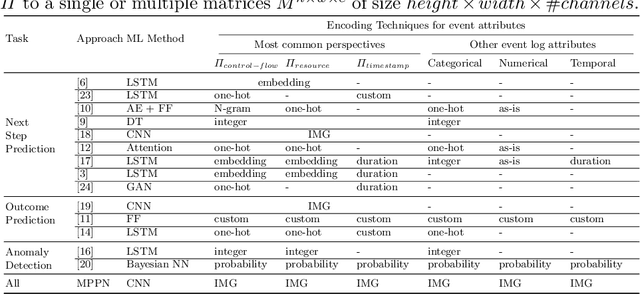
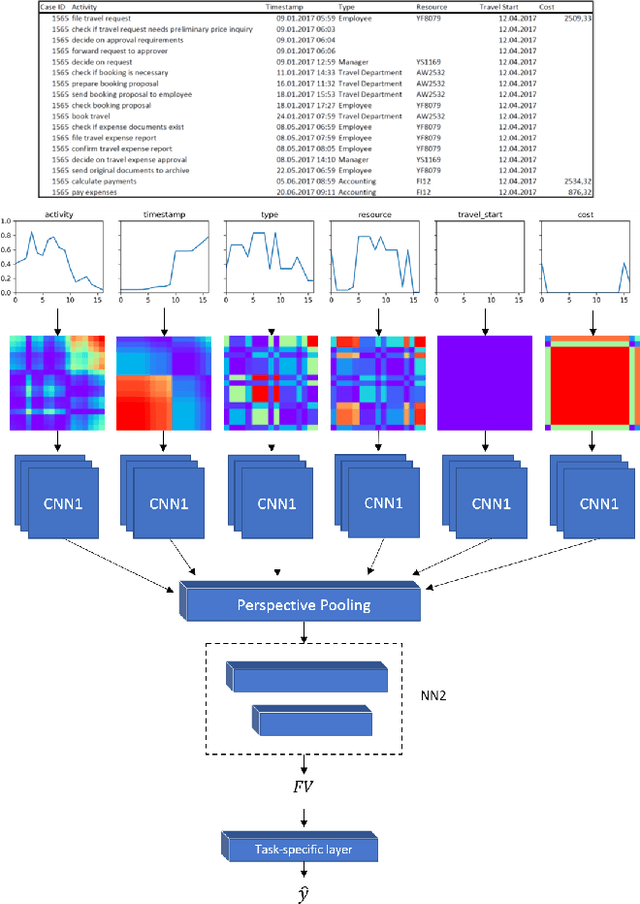
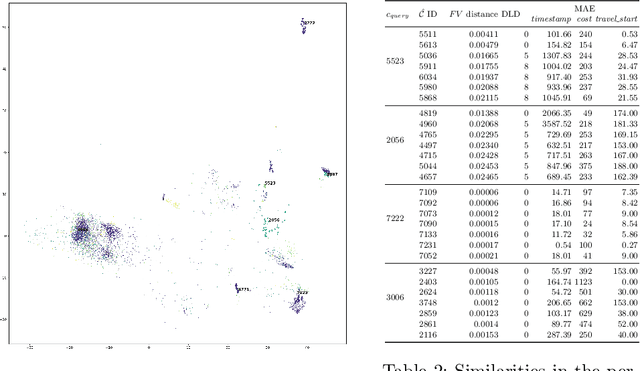
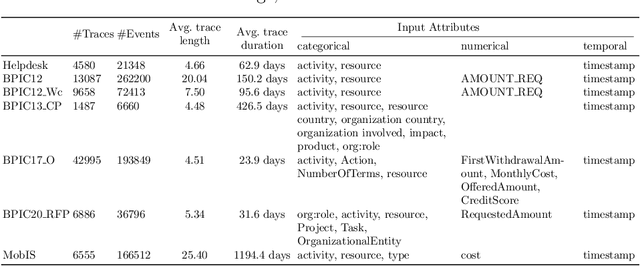
Abstract:Learning meaningful representations of data is an important aspect of machine learning and has recently been successfully applied to many domains like language understanding or computer vision. Instead of training a model for one specific task, representation learning is about training a model to capture all useful information in the underlying data and make it accessible for a predictor. For predictive process analytics, it is essential to have all explanatory characteristics of a process instance available when making predictions about the future, as well as for clustering and anomaly detection. Due to the large variety of perspectives and types within business process data, generating a good representation is a challenging task. In this paper, we propose a novel approach for representation learning of business process instances which can process and combine most perspectives in an event log. In conjunction with a self-supervised pre-training method, we show the capabilities of the approach through a visualization of the representation space and case retrieval. Furthermore, the pre-trained model is fine-tuned to multiple process prediction tasks and demonstrates its effectiveness in comparison with existing approaches.
A systematic literature review on state-of-the-art deep learning methods for process prediction
Jan 26, 2021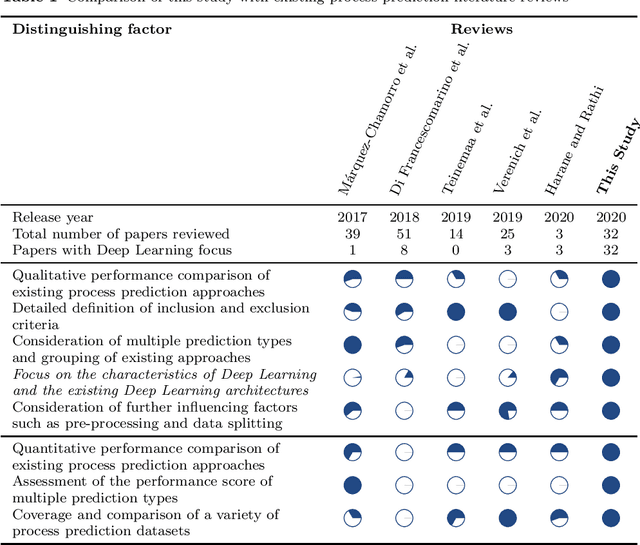
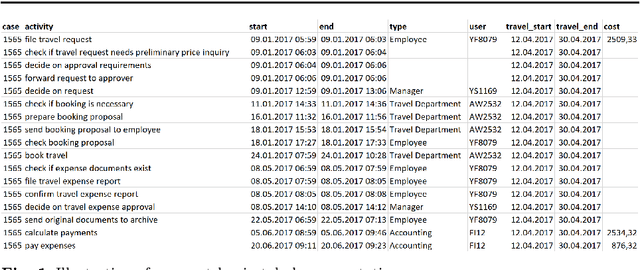


Abstract:Process mining enables the reconstruction and evaluation of business processes based on digital traces in IT systems. An increasingly important technique in this context is process prediction. Given a sequence of events of an ongoing trace, process prediction allows forecasting upcoming events or performance measurements. In recent years, multiple process prediction approaches have been proposed, applying different data processing schemes and prediction algorithms. This study focuses on deep learning algorithms since they seem to outperform their machine learning alternatives consistently. Whilst having a common learning algorithm, they use different data preprocessing techniques, implement a variety of network topologies and focus on various goals such as outcome prediction, time prediction or control-flow prediction. Additionally, the set of log-data, evaluation metrics and baselines used by the authors diverge, making the results hard to compare. This paper attempts to synthesise the advantages and disadvantages of the procedural decisions in these approaches by conducting a systematic literature review.
 Add to Chrome
Add to Chrome Add to Firefox
Add to Firefox Add to Edge
Add to Edge